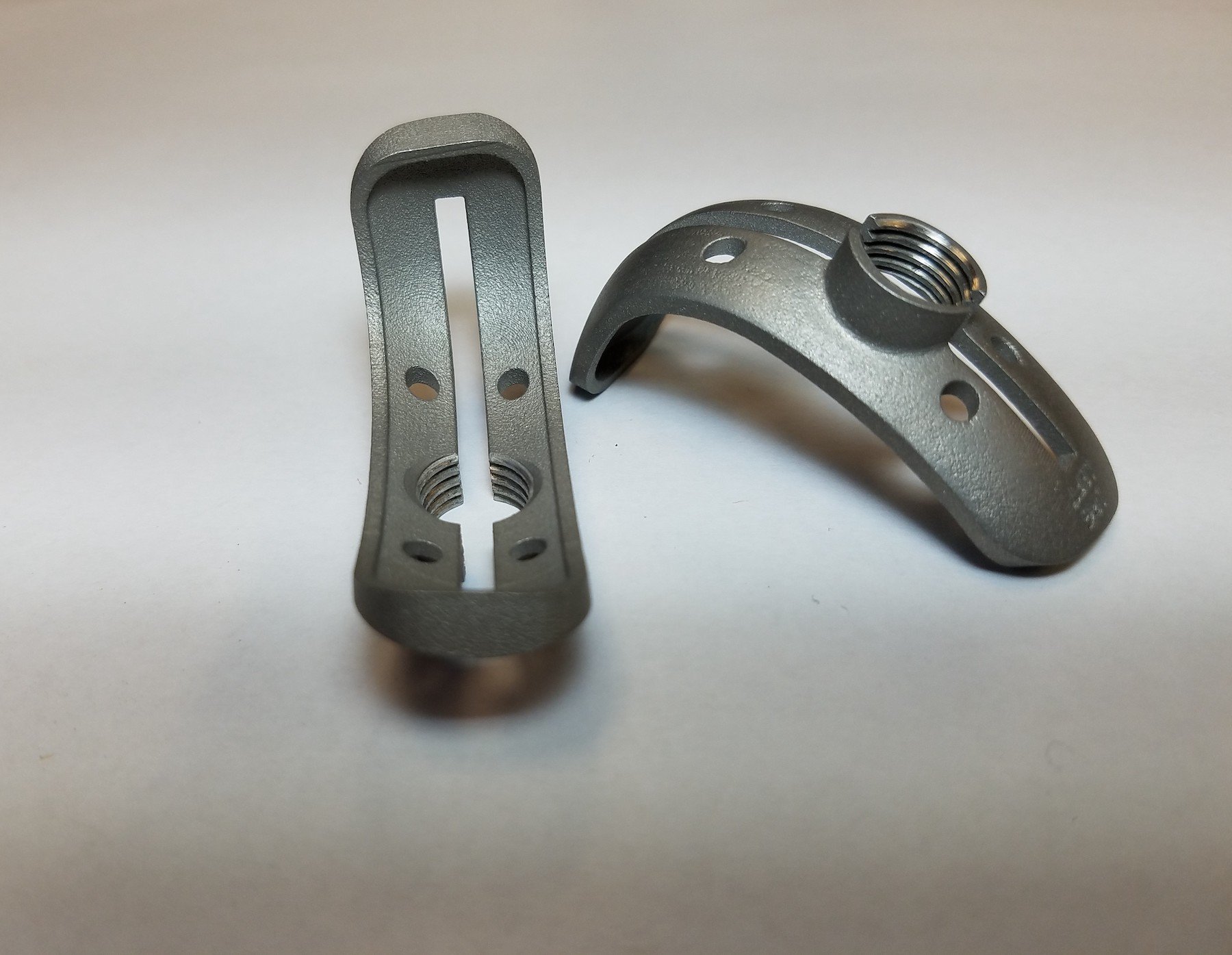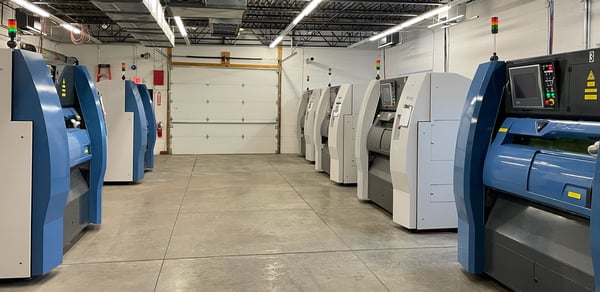
Additive manufacturing, known commonly as 3D printing, is a broad term used to describe a number of layer-based manufacturing techniques. This includes direct metal laser sintering (DMLS), a specific type of additive manufacturing that uses a high power, high density laser to melt and fuse metallic powders together.
DMLS is an extremely versatile technology. It can produce complex geometries that are practically impossible to make through conventional methods in a variety of metals.
The purpose of this article is to examine the materials that can be manufactured with DMLS, including the advantages and disadvantages of this type of additive manufacturing for each material.
Additive manufacturing and 3D printing can be applied to nearly any material, including plastics and metals. DMLS components are produced using a number of powdered metal alloys with a range of particle sizes. The alloy and particle size you select affects the strength and surface finish of the printed component.
Alloys designed for DMLS processing include tool steels, stainless steels (e.g. 300 Series Stainless Steel and PH 17-4 Stainless Steel), aluminum, cobalt chrome, nickel alloys, titanium and others.
Below, we compare each DMLS material using the following factors:
- Relative strength: What is the material’s tensile strength and impact resistance?
- Relative weight: What is the density of the alloy?
- Rust- and corrosion-resistance: What is it's ability to resist oxidation and corrosion over time?
- Magnetic: Does the alloy attract or repel other objects?
- Sterilization: How easily can the alloy become free of bacteria or other living organisms?
- Best applications: What are some of the more common uses of this material?
This martensitic stainless steel is precipitation-hardened and considered a “surgical stainless steel.” It’s name, 17-4, comes from its chemical makeup, which is approximately 17% chromium and 4% nickel. It also contains 3–5% copper.
PH 17-4 stainless steel is best used for components requiring high hardness and/or corrosion resistance at temperatures of up to 600°F (316°C). If volatile materials might react with the component, PH 17-4 stainless steel is often preferred.
PH 17-4 stainless steel comparison:
- Relative strength: Extremely tough and durable.
- Relative weight: Heavy compared to alternatives.
- Ability to resist rust and corrosion: Corrosion resistant.
- Magnetic: Yes.
- Sterilization: Easy; autoclave steam and pressure.
- Best applications: Medical devices, food processing, molding, fuel systems and hydraulics.
Types of stainless steel include 302, 304, 316 and others. The sufficient amount of nickel added to these makes them austenitic and non-magnetic. It keeps the alloy from being hardened by heat treatment.
These stainless steel grades have approximately 18% to 30% chromium and 6% to 20% nickel as the major alloying additions.
It’s best used for components that need the durability, corrosion resistance, and temperature resistance of stainless steel, but also must be non-magnetic.
300 series stainless steel comparison:
- Relative strength: Extremely tough and durable.
- Relative weight: Heavy compared to alternatives.
- Ability to resist rust and corrosion: Corrosion resistant.
- Magnetic: No.
- Sterilization: Easy; autoclave steam and pressure.
- Best applications: Medical devices, food processing, dental tools.
Aluminum is a versatile material with an excellent weight-to-strength ratio.
The relative durability for its cost makes aluminum the preferred material for lower impact, high-volume applications. Aluminum grades include Alsi12, 1100, 3000, 5052 H32, 6061 T6 and others.
Aluminum comparison:
- Relative strength: Less strength than alternatives, but still an impressive weight-to-strength ratio.
- Relative weight: Lightweight relative to other alloys.
- Ability to resist rust and corrosion: Can oxidize, but cannot rust because there is no iron.
- Magnetic: No.
- Sterilization: Easy; autoclave steam and pressure.
- Best applications: Aerospace, automotive, and fuel systems.
This super alloy consists of chrome, cobalt and other metals (molybdenum, nickel, etc.).
The high wear-resistance and biocompatibility makes it ideal for medical uses, such as artificial joints and other implants. Its higher modulus of elasticity and cyclic fatigue resistance make it commonly used for dental prosthetics.
Cobalt chrome comparison:
- Relative strength: Extremely wear-resistant and durable.
- Relative weight: Heavy relative to alternatives.
- Ability to resist rust and corrosion: Corrosion resistant and will not rust.
- Magnetic: Yes.
- Sterilization: Easy; autoclave steam and pressure.
- Best applications: Medical devices and implants, dental tools and prosthetics.
>>> Related resource: Learn how choosing the right materials and machining processes for your medical devices can help get ahead of the competition in this free comparison guide.
This tough alloy is known for possessing superior strength and toughness without losing ductility. This predominantly cast iron alloy is infused with 18% nickel.
18Ni300 maraging steel comparison:
- Relative strength: Very high strength; tough; impact resistant.
- Relative weight: Relatively heavy compared to alternatives.
- Ability to resist rust and corrosion: Moderately Corrosion resistant.
- Magnetic: Yes.
- Sterilization: Medium; chemical or heat.
- Best applications: Aerospace, automotive, and molding.
Titanium is known for its low density and high strength. Its performance in many high-demand applications, such as aerospace and medical devices, is undeniable. Its cost compared to most alternatives is what prevents its mass use across industries.
Titanium comparison:
- Relative strength: Extremely high strength.
- Relative weight: Low density.
- Ability to resist rust and corrosion: Corrosion resistant and will not rust.
- Magnetic: Slightly.
- Sterilization: Easy; autoclave steam and pressure.
- Best applications: Medical devices and implants prosthetics and aerospace.
 The DMLS printer room at Metalcraft Solutions
The DMLS printer room at Metalcraft Solutions
If you’re interested in additive manufacturing for metal prototyping or production, let’s talk about it. As a one-stop shop for all of your production needs, we can discuss the pros and cons of DMLS as well as conventional methods, and ensure you’re getting the best machining process for your needs.
325 Morgan Ave.
Akron, Ohio 44311
330-773-5173